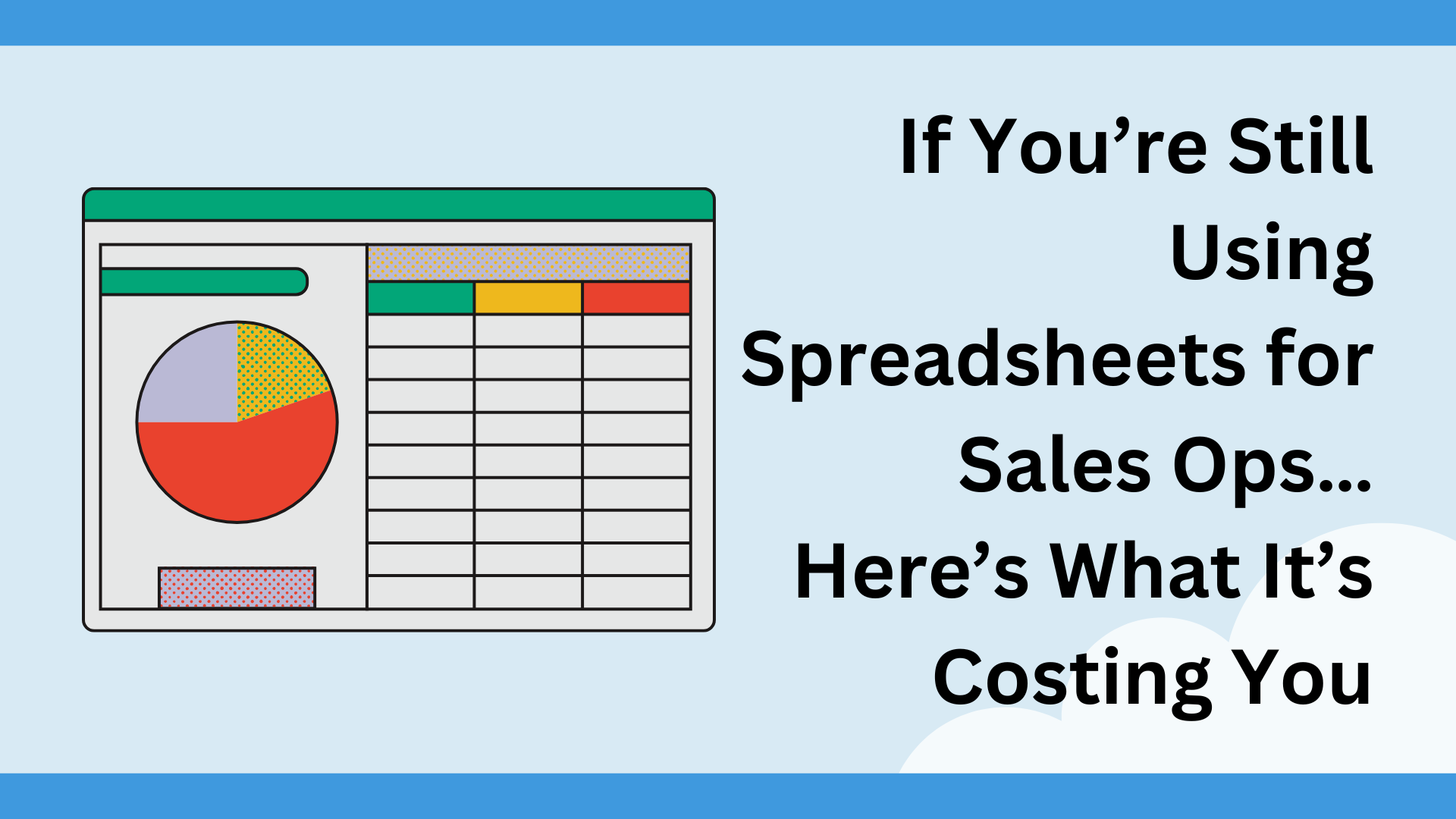Still running Sales Ops in spreadsheets? Discover the hidden costs in time, accuracy, and revenue—and what automation tools can do instead.
Spreadsheets are familiar. Easy to start. Free. But they were never built to run Sales Operations at scale. If you're managing your CRM, sales data, pipeline tracking, or forecasting in Excel or Google Sheets, you're likely losing more than just time.
According to Salesforce’s State of Sales report, high-performing sales teams are 1.5x more likely to use automation tools than underperformers. That gap matters, especially when your pipeline is full and your team is stretched.
5 Real Ways Spreadsheets Are Slowing You Down
1. Manual Entry Wastes Time
Copying and pasting from email threads, updating lead status manually, or toggling between sheets to calculate commissions… none of these scales.
Even worse: According to Hubspot’s report, small teams spend up to 20% of their week managing data instead of selling.
2. Data Errors Are Inevitable
One wrong formula can skew your whole pipeline forecast. One typo can lose a deal. Without built-in validation rules, spreadsheets invite human error—and make it harder to trust the data.
3. No Visibility Across Teams
Sales, marketing, and finance rarely work from the same spreadsheet. That leads to silos, duplicated effort, and confusion. Sales ops should be the connector, not the bottleneck.
4. No Real-Time Updates
In fast-moving sales cycles, you need data that updates instantly. Spreadsheets can’t pull from email threads, CRM updates, or calls in real time. That lag costs you agility.
5. Zero Automation
Spreadsheets don’t trigger follow-ups. They don’t send reminders. They don’t route leads or update statuses. And they definitely don’t help your reps focus on high-intent buyers.
CRM vs Spreadsheet: The Real Tradeoffs
CRM tools like HubSpot, Salesforce, or Pipedrive don’t just store data. They centralize your pipeline, automate tasks, and give real-time reporting.
Compare that to spreadsheets:
|
Feature |
Spreadsheet |
CRM |
|
Real-time data sync |
✘ |
✔️ |
|
Task automation |
✘ |
✔️ |
|
Access control |
Limited |
Advanced |
|
Reporting dashboards |
Manual |
Dynamic |
|
Lead routing |
✘ |
✔️ |
Spreadsheets might feel cheaper up front. But the cost shows up in lost deals, broken processes, and limited visibility.
Sales Process Automation: The Competitive Advantage
Modern sales ops teams use tools that:
- Automate repetitive tasks (like assigning leads or scheduling follow-ups)
- Integrate with marketing, support, and finance platforms
- Offer reporting dashboards that update in real time
- Help reps prioritize based on lead behavior and fit
Sales process automation doesn’t just save time. It accelerates pipeline velocity and improves conversion rates.
When your team has 10 reps, the difference might feel small.
When you scale to 50+, it becomes the difference between hitting quota—or missing it every quarter.
What to Do Next
Ask yourself:
- Are your reps manually logging activities?
- Are you spending time fixing broken formulas?
- Is your forecasting off every month?
- Can your sales and marketing teams see the same lead data instantly?
If you answered yes to any of these, it’s time to upgrade.





Leave a Comment